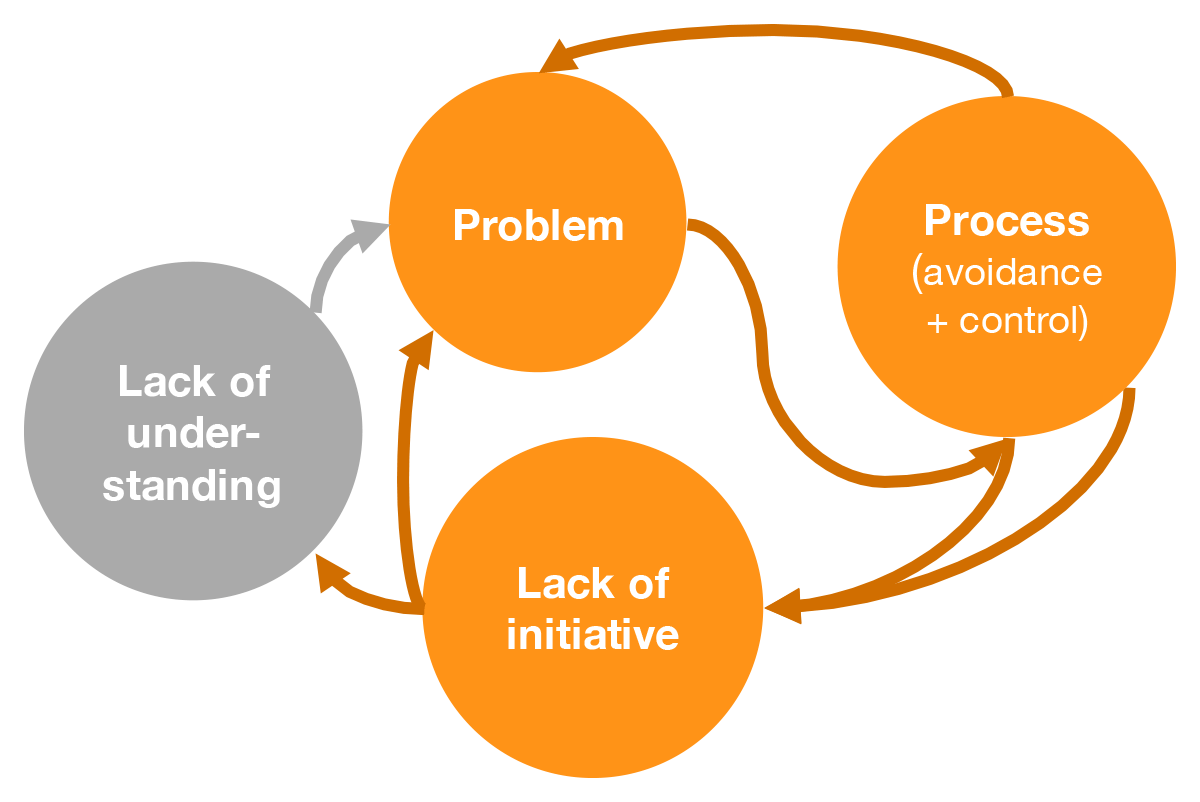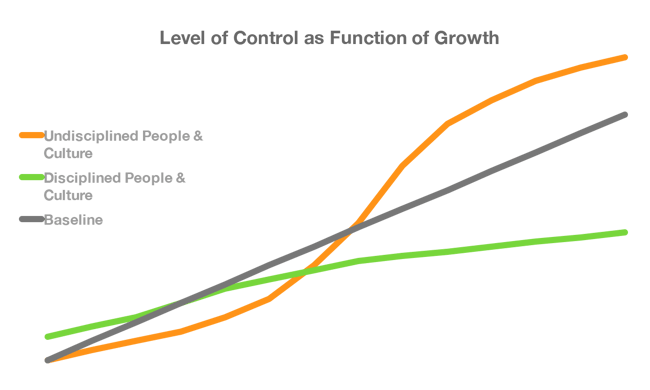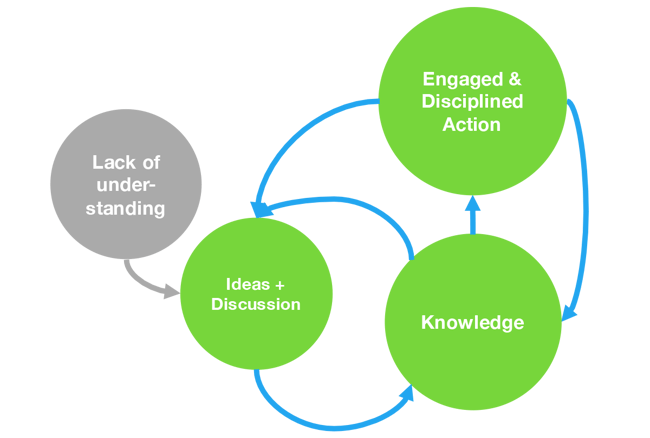Balancing Freedom and Control to Build an Innovative Organization
The topics we often spend the most time talking about with both our prospects and customers are usually related to building an innovative organization where one can actually make positive change happen. One of the central themes in these discussions is often the relationship between freedom and control.
I recently had a great conversation on the topic with one executive who’d read my previous post on idea management processes. He really liked the illustrative descriptions of different systematic processes for managing ideation but was also confused by the end of the post where I discuss the pros of also providing your employees with a certain amount of freedom. He thought those points made it sound like the processes I’d previously described were inferior to that model and not really worth using at all. I thought I’d share some of the points from the great conversation that ensued.

Figuring Out the Right Balance
All companies start off with very few rules and processes. Once the company grows and encounters problems and crises, rules and processes are implemented to prevent the same issues from happening again.
Also, as the number of levels in the hierarchy grows with the headcount; processes, usually centralized, are set up to maintain and improve efficiency.
All of that just make a lot of sense and is often unavoidable. There’s no point in trying to fight many of these positive developments just in the name of maintaining freedom. However, there are also a couple of fundamental problems with an increasing level of control:
- People will start to trust the processes and stop thinking for themselves
- Too much control in the wrong places will effectively make positive change and progress really hard

Thus, one has to figure out the equation of balancing freedom and control within the context of their own organization. And even within the organization, the right balance will be very different for different functions and different groups of people. For example, it just makes sense to operate finance with a higher level of control than it does design.
The right balance of freedom and control will be different, even in different parts of your own organization.
Digging Deeper
Even though a rise in the level of control usually correlates with the age and size of the company, those factors are not the real reasons for putting these mechanisms in place. The real reasons for most of the processes that aren’t just universally positive developments are the employees’ inability to understand the big picture, as well as their lack of discipline. Together these two lead to a decrease in both efficiency (being productive), as well as effectiveness (doing the right thing). This obviously shows in the results and causes the leaders of the organization to distrust their employees and in turn introduce even more mechanisms for control to try to combat the situation.
Obviously many times these new control mechanisms are exactly the right solution for the situation – but often times they also aren’t. When they don’t solve the root cause, they only alleviate the symptoms for a little while before the condition worsens. At that point, the control mechanisms won’t really do anything to solve the issue but instead provide a false sense of security, which in turn inhibits the organization from moving in and fixing the real problem.
In reality, most of these issues aren’t the fault of the employees but come down to a failure in leadership. The leaders might fail in understanding the big picture themselves, in communicating that big picture to others, in educating their employees, or perhaps in creating a disciplined culture of excellence. In practice, all of the aforementioned are incredibly hard tasks in themselves so it’s almost a miracle that some companies have managed to pull off all of these together.

The Road to Greatness
As Jim Collins well explains in his book Good to Great, discipline is the key to creating great results. It is the responsibility of the leadership to create a culture of excellence where disciplined people think and act with great discipline. Once you have that in place, you won’t need to micromanage or create nearly as many processes to do that for you as people will already know what to do and will figure out the ways to do that efficiently themselves.
As a result, most of the best companies will have a significantly higher level of freedom on paper but paradoxically be much more disciplined and focused at the same time.
However, getting there isn’t quick or easy. It will take unwavering determination and years of hard work just to create that kind of an environment and it is only when you have that in place that you’ll gradually start to see the results improving. To get there, you need to work systematically to shift the culture, step-by-step, towards the kind of an environment where everyone has the capabilities for critical thinking and improving their own ways of working to reach the goals of the organization. Prematurely granting everyone the freedom to do whatever they deem correct will just result in uncontrolled chaos if people aren’t ready for it. Even ways of working, such as using self-organized teams, have some prerequisites in order for them to work properly.
To get there, you need to work systematically to shift the culture, step-by-step, towards the kind of an environment where everyone has the capabilities for critical thinking and improving their own ways of working to reach the goals of the organization. Prematurely granting everyone the freedom to do whatever they deem correct will just result in uncontrolled chaos if people aren’t ready for it. Even ways of working, such as using self-organized teams, have some prerequisites in order for them to work properly.
Final Thoughts
Getting back to my original point, choosing an idea management process, just like every other decision, has to be done based on the capabilities of the organization and the employees. If you have a staff of highly educated, extremely smart and driven people, it just makes sense to grant them more freedom when it comes to choosing which ideas to implement and which not, as well as how to actually do that.
If you aren’t quite in a place where you could trust your employees to make the right decisions when it comes to their job, a systematic process for managing and discussing ideas is a truly tremendous way of moving towards that. It will teach the employees both to think for themselves, as well as to gradually understand the big picture by engaging them in a rich and transparent two-way dialogue focused explicitly on why and how certain decisions are made.
In my humble opinion, there are very few investments that will provide a better long-term return than striving to create a culture of excellence where every employee will work hard to understand what is that they should be doing and then doing that better.
Interested in Innovation and Leadership?
Subscribe to our blog to get the latest stories on innovation, leadership and culture straight to your inbox.





